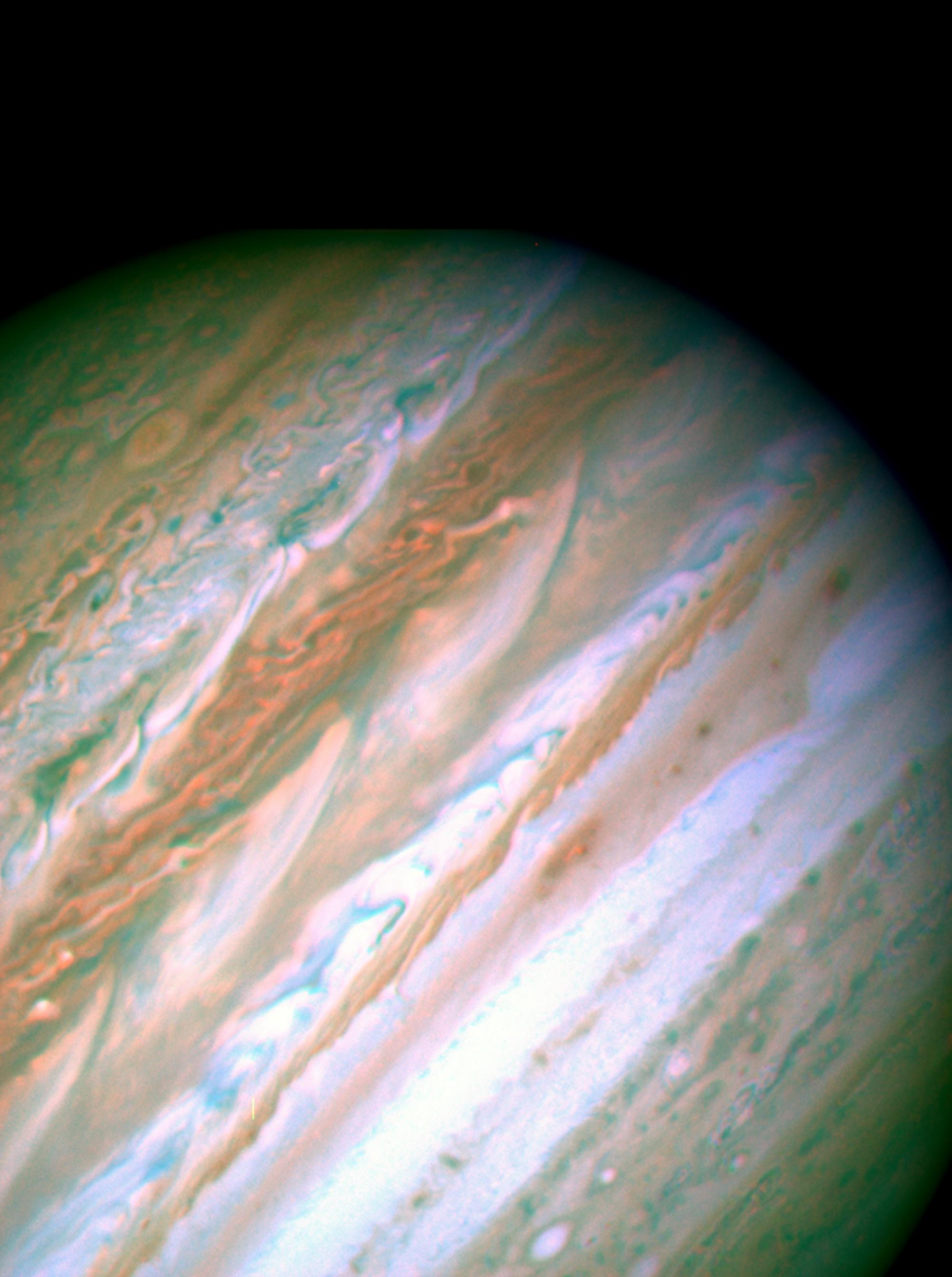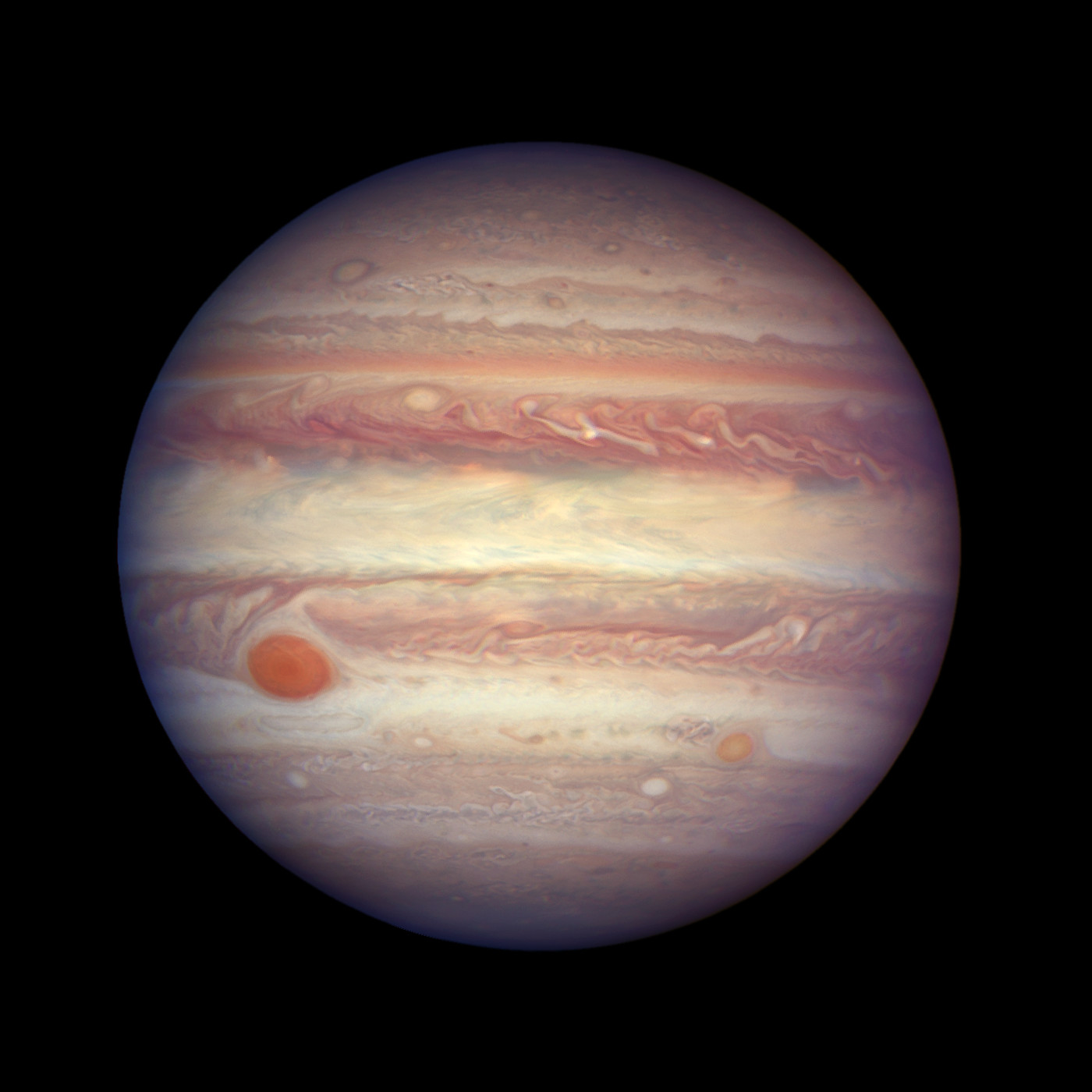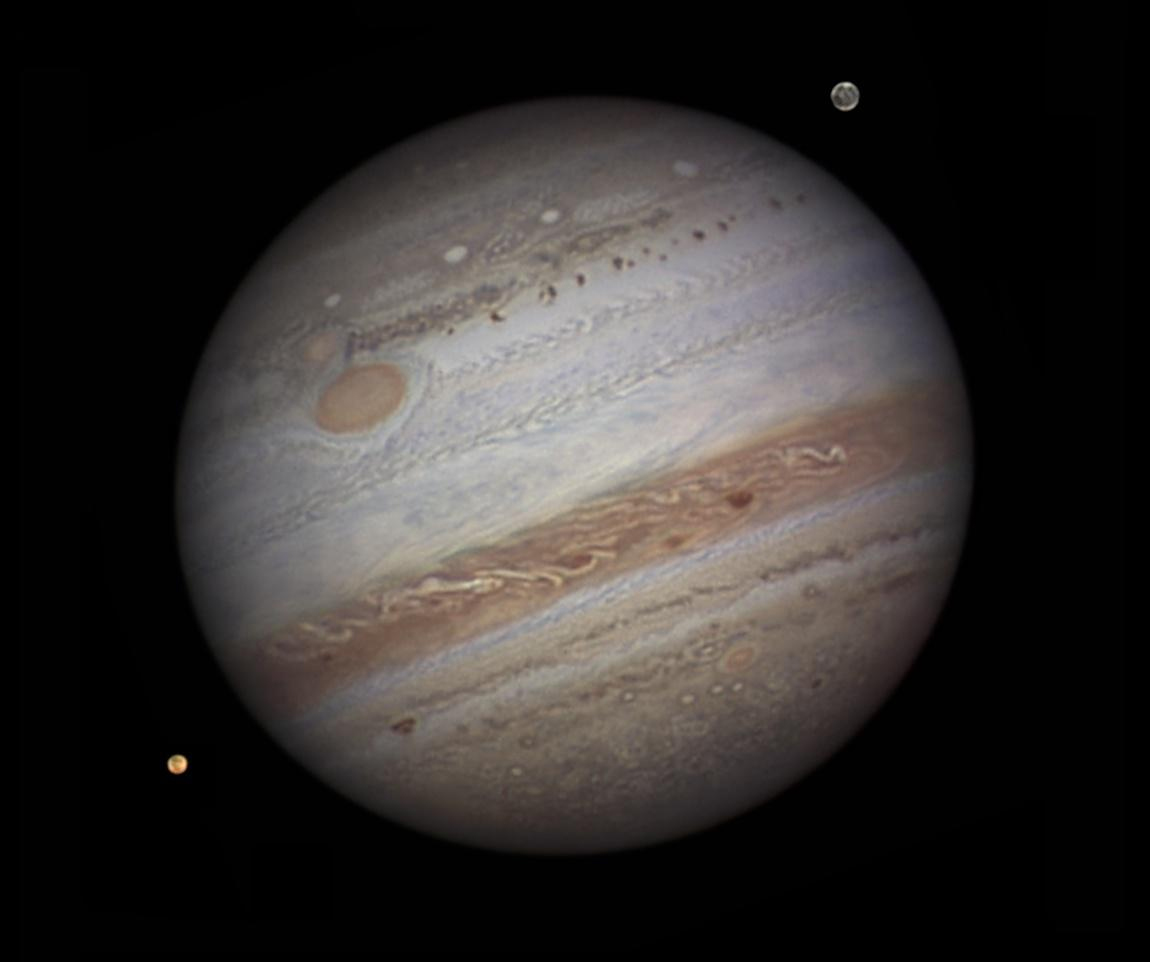Hubble Telescope, Skywatchers Prep for Spectacular Views of Jupiter Tonight

Tonight (April 7), Jupiter will be at its closest point to Earth for all of 2017, creating a spectacular view for both skywatchers and the Hubble Space Telescope, which will take full advantage of the proximity to scope out the gas giant.
The large planet is currently at opposition, which means that Jupiter, Earth and the sun form a straight line. When viewed from Earth, Jupiter is on the opposite side of the sky from the sun. During opposition, Jupiter rises near the time of sunset and sets around sunrise. Northern Hemisphere observers in mid-northern latitudes can see the planet in the southern sky just above Spica, the brightest star in the constellation Virgo.
Amy Simon, a planetary scientist at NASA, told Space.com in an interview that the planet's close approach — at the moment, Jupiter is "only" about 415 million miles (668 million kilometers) from Earth — means that Hubble can also get a more detailed view than usual. [Jupiter at Opposition - Hubble Snaps New Views of Gas Giant (Video)]
"The reason the opportunity is so great is that it's the biggest it appears in the sky," Simon said. "Opposition is a good time for Hubble to look."
Simon noted that the Hubble telescope could see details of the planet's cloud bands, and even wave-like features, in an image taken a few days ago. "We're learning a lot about Jupiter's weather," she said.
Though space probes such as NASA's twin Voyager spacecraft, Galileo and Juno can gather a lot of data as they approach the planet, Hubble has certain advantages. First, whereas the two Voyagers flew by the planet for just a week, Hubble has the chance to look much longer.
And although orbiters have more time to monitor the planet, they are limited to the specific areas they are designed to study. Juno, for example, which is currently orbiting Jupiter, is studying the planet's interior and magnetic field, and is less suited than Hubble is for certain weather studies. Notably, Hubble can see in ultraviolet (UV) light, which allows the telescope to study the giant planet's atmosphere closely.
Breaking space news, the latest updates on rocket launches, skywatching events and more!
"Hubble helps put [Juno's observations] into context," Simon said. For example, the UV observations let astronomers use Hubble to watch clouds change over time.
The Hubble Space Telescope may also help Earthbound observers see if Jupiter's moon Europa is a possible home for life, by studying the composition of the plumes that seem to emerge from its surface. Last year, Hubble spotted possible water plumes via their UV emissions. "It's a way of getting access to the water without having to dig through the surface," Simon said.
Jupiter's Great Red Spot is another feature that Hubble has turned its eye to: "It's gotten a bit smaller and rounder," Simon said. "We're learning what powers it." The Great Red Spot is also a high-pressure system, forming a storm that spins counterclockwise. Jovian high- and low-pressure systems can both form storms. On Earth, cyclonic storms like hurricanes form in low-pressure systems that tend to spin clockwise. High pressure systems on Earth don't form cyclones at all, and usually mean clear skies.
The Great Red Spot has lasted centuries — it was first reliably observed in 1830, with possible sightings at least a century earlier — and winds in the giant, persistent storm have been known to hit 500 mph (800 km/h). "You'd really notice that," Simon said. The storm itself is so large, Earth could fit comfortably inside it.
"Jupiter is so interesting because it's a gas giant," Simon said. "We can watch weather in a different way." The planet's weather isn't constrained by a surface with mountains or oceans that can alter wind patterns, allowing large-scale structures such as the Great Red Spot to form and persist.
Still, there are some similarities: The wave-like features that Hubble saw on Jupiter's surface are quite like some types of waves that appear in Earth's atmosphere, for instance, Simon said.
Jupiter at opposition is also a good time for amateur skywatchers to see Jupiter's moons. Simon noted that, because the planet is visible all night, it is high in the sky at midnight, and its proximity to Earth makes Jupiter's largest moons — Io, Europa, Ganymede and Callisto — more visible even in small telescopes or binoculars.
Follow Jesse Emspak on Twitter @Mad_Science_Guy. You can follow us @Spacedotcom and on Facebook & Google+. Original story on Space.com.

Jesse Emspak is a freelance journalist who has contributed to several publications, including Space.com, Scientific American, New Scientist, Smithsonian.com and Undark. He focuses on physics and cool technologies but has been known to write about the odder stories of human health and science as it relates to culture. Jesse has a Master of Arts from the University of California, Berkeley School of Journalism, and a Bachelor of Arts from the University of Rochester. Jesse spent years covering finance and cut his teeth at local newspapers, working local politics and police beats. Jesse likes to stay active and holds a fourth degree black belt in Karate, which just means he now knows how much he has to learn and the importance of good teaching.


